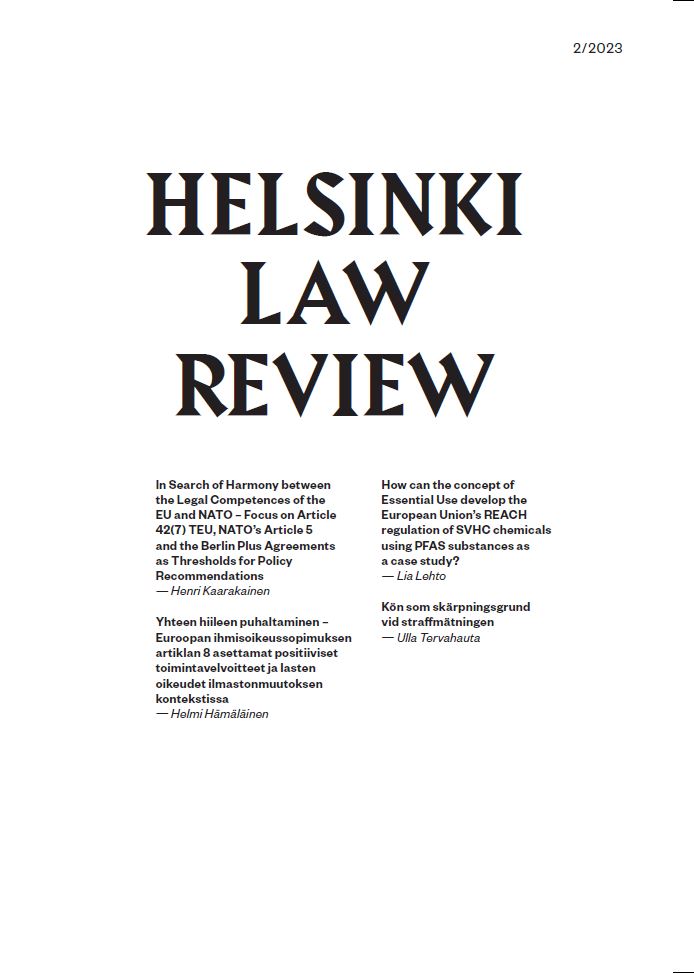How can the concept of Essential Use develop the European Union’s REACH regulation of SVHC chemicals using PFAS substances as a case study?
DOI:
https://doi.org/10.33344/vol17iss2pp64-80Avainsanat:
Reach-asetus, vaaralliset aineet, kemikaaliturvallisuus, Erityistä huolta aiheuttavat aineet (SVHC)Abstrakti
The REACH (EC, No 1907/2006 of the European and of the Council) regulation of chemicals in the European Union lacks in its agility to regulate Substances of Very High Concern (SVHC). This paper aims to give a legal-dogmatic overview of how REACH should be developed, especially in relation to SVHC chemicals, and using PFAS chemicals, or per- and polyfluoroalkyl substances, as a case study. This is done by using the “essential use” model to group SVHC chemicals in a
more efficient manner.
This paper introduces PFAS chemicals and broadly SVHC substances, summarizes REACH regulations processes, and considers the feasibility of introducing “essential use” as a concept to the current regulation. The findings of this paper suggest that essential use should be developed within the restriction and authorization processes of REACH using a fast-tracked system of grouping SVHC chemicals.



